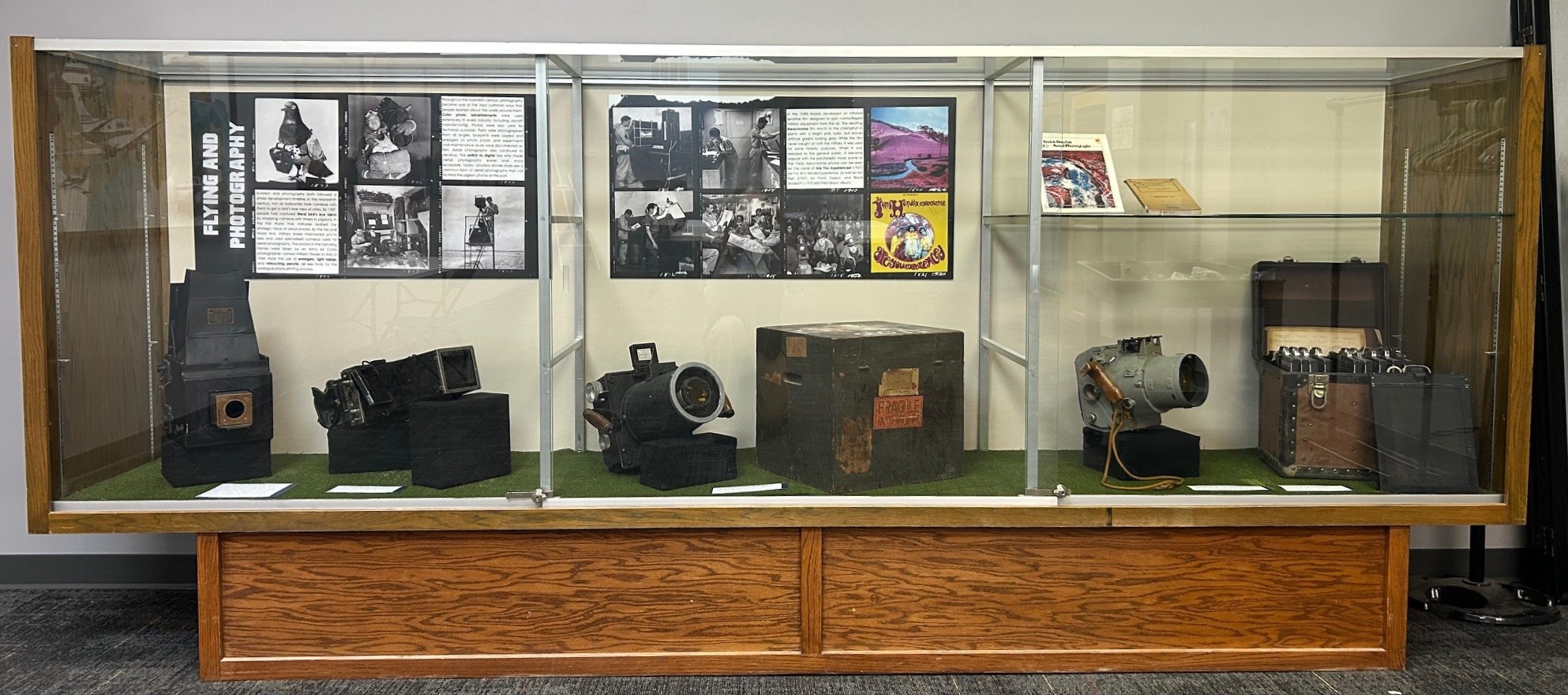
Aviation and photography both followed a similar development timeline. In the nineteenth century, hot air balloonists took cameras with them to get a bird’s eye view of cities. By 1907, people had captured literal bird’s eye views by strapping cameras with timers to pigeons. In the First World War, militaries realized the strategic value of aerial photos. By the Second World War, military bases maintained photo labs and used specialized cameras used for aerial photography. The photos in the following frames were taken by an Army Air Corps photographer named William Dwyer in Italy in 1944. Note the use of enlargers, light tables, and retouching pencils: all key tools for the analogue photo printing process.
Throughout the twentieth century, photography became one of the most common ways that people learned about the world around them. Color photo advertisements were used extensively in every industry, including aircraft manufacturing. Photos were also used for technical purposes. Parts were photographed from all angles, blueprints were copied and enlarged on photo paper, and experiments and maintenance issues were documented on film. Aerial photography also continued to develop. The switch to digital has only made aerial photography easier and more accessible. Today, amateur drones shots are a common form of aerial photography that call to mind the pigeon photos of the past.
In the 1940s Kodak developed an infrared sensitive film designed to spot camouflaged military equipment from the air. The resulting Aerochrome film reacts to the chlorophyll in plants with a bright pink color, but leaves artificial greens looking gray. While the film never caught on with the military, it was used for some forestry purposes. When it was released to the general public, it became popular with the psychedelic music scene of the 1960s. Aerochrome photos can be seen on the cover of Are You Experienced (1967) by the Jimi Hendrix Experience, as well as Hot Rats (1969) by Frank Zappa, and Black Sabbath’s 1970 self-titled debut album.
*Click for Full Resolution*
